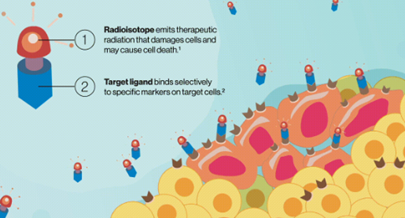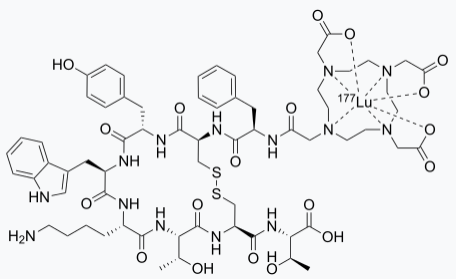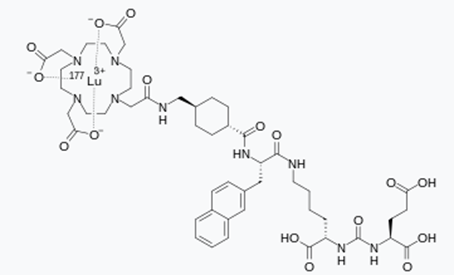Radioligand Therapy (RLT)
Procedures
Radioligand Therapy (RLT)
Radioligand therapy (RLT) comprises two primary components: the cell-targeting compound, known as the ligand, and the therapeutic radioactive isotope (e.g., Lu-177, I-131, Yttrium-90). The ligand selectively binds to specific markers on target cells, while the radioisotope emits therapeutic radiation, causing damage or cell death. By leveraging radioactive atoms in targeted cancer therapy, RLT delivers radiation to target cells, significantly enhancing survival and quality of life for individuals with certain cancers (such as neuroendocrine tumors (NETs), lymphoma, and prostate cancer). Approved RLT drugs, like Lutathera® and Pluvicto®, show promise as "game changers" in cancer treatment. Novartis recently invested more in RLT by acquiring Mariana Oncology for $1.7B, powered by the mRNA display platform. BMS also acquired RLT company RayzeBio for $4.1B in 2023. RLT is expected to grow by 30% annually over the next decade, according to Julien Dodet, CEO of Orano Med. However, RLT necessitates a deep understanding of medicine, chemistry, physics, and biology. Specialized manufacturing and transportation methods are crucial and require meticulous planning. Additionally, selecting the appropriate radioligand is vital to minimize damage to surrounding normal tissues. The radioligand must be radiochemically pure, stable, and exhibit high binding affinity and selectivity for the targets.
A highly selective peptide binder with strong affinity for the target is essential for effective RLT. mRNA display stands out as a revolutionary method for discovering peptide binders. PeptiFinder Biotech provides top-tier mRNA display-centered platform services, boasting trillion diversity libraries (linear, mono-cyclic, and bi-cyclic), can identify potent peptide binders (hits) for your specific targets in a month. Additionally, PeptiFinder can also design and screen customized libraries up to 10^15 tailored to your specific needs. This facilitates the rapid identification of potent peptide binders for specific targets, incorporating unnatural amino acids to tailor physiochemical properties and expedite the Hit-to-Lead process.



The future of targeted alpha therapy development and manufacture
https://www.novartis.com/research-development/technology-platforms/radioligand-therapy

